Many people today, from a religious and nonreligious point of view, try to use Georges Lemaître (a Belgian Roman Catholic priest, astronomer and mathematician), to claim that he discovered the BBST in an attempt to either credit or discredit the BBST or religion. Both sides greatly oversimplify the BBST history. There are hundreds of online sources who spread misinformation about the BBST.
One important point, is that religion played no role in Lemaître’s work and contributions to the BBST. See the evidence from Georges Lemaître’s own words in his section below.
There are hundreds of people who have contributed to the BBST but here is a brief outline:
~Christian Andreas Doppler (29 November 1803 – 17 March 1853)
Doppler was an Austrian mathematician and physicist who proposed The Doppler effect (or Doppler shift) in 1842.
http://www-history.mcs.st-and.ac.uk/Biographies/Doppler.html
The Doppler effect is the change in frequency of a wave (or other periodic event) for an observer moving relative to its source.
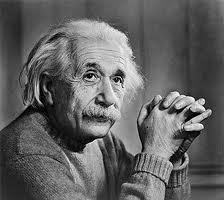
~Albert Einstein (1879-1955)
The Theory of Relativity was developed by the physicist, Albert Einstein, between 1905 and 1919.
http://physics.about.com/od/relativisticmechanics/a/relativity_4.htm
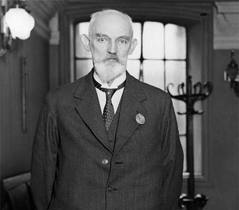
~Willem de Sitter (6 May 1872 – 20 November 1934)
In 1913 de Sitter produced an argument based on observations of double star systems which proved that the velocity of light was independent of the velocity of the source. It put to rest attempts which had been made up until this time to find emission theories of light which depended on the velocity of the source but were not in conflict with experimental evidence.
De Sitter corresponded with Paul Ehrenfest in 1916, and he proposed that a four-dimensional space-time would fit in with cosmological models based on general relativity. He published a series of papers (1916-17) on the astronomical consequences of Einstein’s general theory of relativity. He found solutions to Einstein’s field equations in the absence of matter. This was significant since Mach had stated a principle that local inertial frames of reference were determined by the large-scale distribution of mass in the universe. De Sitter asked:-
If no matter exists other than the test body, does it have inertia.
De Sitter’s work led directly to Arthur Eddington’s 1919 expedition to measure the gravitational deflection of light rays passing near the Sun, results which, at that time, could only be obtained during an eclipse. De Sitter, unlike Einstein, maintained that relativity actually implied that the universe was expanding, theoretical results which were later verified observationally and only then accepted by Einstein.
In fact Einstein had introduced the cosmological constant in 1917 to solve a significant problem concerning the universe, which had also troubled Newton before him, namely why does the universe not collapse under gravitational attraction. This rather arbitrary constant of integration which Einstein introduced, admitting it was not justified by our actual knowledge of gravitation, was later said by him to be “the greatest blunder of my life.” However de Sitter wrote in 1919 that the term:
… detracts from the symmetry and elegance of Einstein’s original theory, one of whose chief attractions was that it explained so much without introducing any new hypothesis or empirical constant.
In 1932 Einstein and de Sitter published a joint paper in which they proposed the Einstein-de Sitter model of the universe. This is a particularly simple solution of the field equations of general relativity for an expanding universe. They argued in this paper that there might be large amounts of matter which does not emit light and has not been detected. This matter, now called ‘dark matter’, has since been shown to exist by observing is gravitational effects. However the dark matter postulated by Einstein and de Sitter in 1932 still remains a mystery in that its nature is still unknown but is the subject of major research efforts today.
~Paul Ehrenfest (January 18, 1880 – September 25, 1933)
Ehrenfest was an Austrian and Dutch physicist, who made major contributions to the field of statistical mechanics and its relations with quantum mechanics, including the theory of phase transition and the Ehrenfest theorem.
http://www-groups.dcs.st-and.ac.uk/history//Biographies/Ehrenfest.html
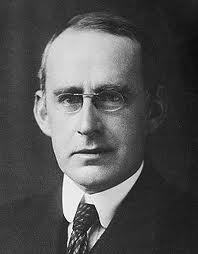
~Sir Arthur Stanley Eddington (28 December 1882 – 22 November 1944)
Eddington was an English astronomer, physicist, and mathematician who did his greatest work in astrophysics, investigating the motion, internal structure, and evolution of stars. He also was the first expositor of the theory of relativity in the English language.. He was also a philosopher and a popularizer of science. The Eddington limit, the natural limit to the luminosity of stars, or the radiation generated by accretion onto a compact object, is named in his honor.
He is famous for his work regarding the Theory of Relativity. Eddington wrote a number of articles which announced and explained Einstein’s theory of general relativity to the English-speaking world.
Eddington was also heavily involved with the development of the first generation of general relativistic cosmological models. He had been investigating the instability of the Einstein universe when he learned of both Lemaitre’s 1927 paper postulating an expanding or contracting universe and Hubble’s work on the recession on the spiral nebulae. He felt the cosmological constant must have played the crucial role in the universe’s evolution from an Einsteinian steady state to its current expanding state, and most of his cosmological investigations focused on the constant’s significance and characteristics. In The Mathematical Theory of Relativity, Eddington interpreted the cosmological constant to mean that the universe is “self-gauging”.
http://www-groups.dcs.st-and.ac.uk/history/Biographies/Eddington.html
http://www.britannica.com/EBchecked/topic/178891/Sir-Arthur-Stanley-Eddington
http://www-history.mcs.st-andrews.ac.uk/history//Biographies/Eddington.html
~Redshift
In physics (especially astrophysics), redshift happens when light seen coming from an object that is moving away is proportionally increased in wavelength, or shifted to the red end of the spectrum. More generally, where an observer detects electromagnetic radiation outside the visible spectrum, “redder” amounts to a technical shorthand for “increase in electromagnetic wavelength” — which also implies lower frequency and photon energy in accord with, respectively, the wave and quantum theories of light.
Redshifts are attributable to the Doppler effect, familiar in the changes in the apparent pitches of sirens and frequency of the sound waves emitted by speeding vehicles; an observed redshift due to the Doppler effect occurs whenever a light source moves away from an observer.
Edwin Hubble was generally incorrectly credited with discovering the redshift of galaxies; these measurements and their significance were understood before 1917 by James Edward Keeler (Lick & Allegheny), Vesto Melvin Slipher (Lowell), and William Wallace Campbell (Lick) at other observatories.
~Vesto Melvin Slipher (November 11, 1875 – November 8, 1969)
Slipher was an American astronomer who used spectroscopy to investigate the rotation periods of planets and the composition of planetary atmospheres. In 1912, he was the first to observe the shift of spectral lines of galaxies, making him the discoverer of galactic redshifts. He discovered the sodium layer in 1929. He was responsible for hiring Clyde Tombaugh and supervised the work that led to the discovery of Pluto in 1930.
http://arijmaki.wordpress.com/2009/09/20/vesto-slipher-the-redshift-anomaly-pioneer/
http://www.roe.ac.uk/~jap/slipher/
~James Edward Keeler (September 10, 1857 – August 12, 1900)
Keeler was the American astronomer who discovered the first pulsar in 1899.
http://www.lcas-astronomy.org/articles/display.php?filename=james_e_keeler&category=biographies
~William Wallace Campbell (11 April 1862 – 14 June 1938)
Campbell was an American astronomer, and director of Lick Observatory from 1900 to 1930. He specialized in spectroscopy.
http://texts.cdlib.org/view?docId=hb0g50035s&doc.view=frames&chunk.id=div00001&toc.depth=1&toc.id=
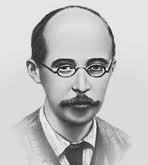
~Alexander Friedmann (1888–1925)
Friedmann was a Russian cosmologist and mathematician, who used Albert Einstein’s General Theory of Relativity to discover an expanding universe and the theoretical underpinnings for both the Big Bang and steady state models of the universe, before there was any observational evidence. In particular, his solutions to Einstein’s field equations implied that the radius of the universe increased over time. At first, Einstein thought that the solution was erroneous, but he later agreed that they were in fact correct, and indeed that they shed new light on the whole subject. Friedmann’s papers from 1924 demonstrated all three Friedmann models (describing positive, zero and negative curvature of space-time).
http://www.physicsoftheuniverse.com/scientists_friedmann.html
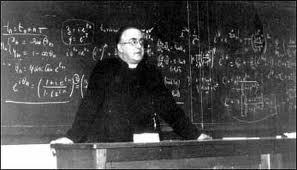
~Georges Henri Joseph Édouard Lemaître (17 July 1894 – 20 June 1966)
Two years later, Georges Lemaître (a Belgian Roman Catholic priest, astronomer, and mathematician), also used Einstein’s Theory of Relativity as a basis, published his own independent research. A skeptical Einstein replied: “Your math is correct, but your physics is abominable.” Lemaître called his idea the “Primeval Atom” describing his theory as “the Cosmic Egg exploding at the moment of the creation.”
In 1927, Lemaître published a virtually unnoticed paper that provided a compelling hypothesis to the equations of General Relativity for the case of an expanding universe. His solution had, in fact, already been derived without his knowledge by the Russian Alexander Friedmann in 1922. But Friedmann was principally interested in the mathematics of a range of idealized solutions (including expanding and contracting universes) and did not pursue the possibility that one of them might actually describe the physical universe. In contrast, Lemaître attacked the problem of cosmology from a thoroughly physical point of view, and realized that his solution predicted the expansion of the real universe of galaxies that observations were only then beginning to suggest.
It is tempting to think that Lemaître’s deeply-held religious beliefs might have led him to the notion of a beginning of time. After all, the Judeo-Christian tradition had propagated a similar idea for millennia.
Yet Lemaître clearly insisted that there was neither a connection nor a conflict between his religion and his science. Rather he kept them entirely separate, treating them as different, parallel interpretations of the world, both of which he believed with personal conviction.
Indeed, when Pope Pius XII referred to the new theory of the origin of the universe as a scientific validation of the Catholic faith, Lemaître was rather alarmed. Delicately, for that was his way, he tried to separate the two:
“As far as I can see, such a theory remains entirely outside any metaphysical or religious question. It leaves the materialist free to deny any transcendental Being… For the believer, it removes any attempt at familiarity with God… It is consonant with Isaiah speaking of the hidden God, hidden even in the beginning of the universe.”
http://www.amnh.org/education/resources/rfl/web/essaybooks/cosmic/p_lemaitre.html

~Edwin Hubble (1889-1953)
Hubble demonstrated in 1929 that the Universe is expanding, showing beyond reasonable doubt that the Universe sprang into being a finite time ago. He found observable evidence that all galaxies seemed to be receding from us with velocities that increased in proportion to their distance from us - a relationship now known as Hubble’s Law.
Hubble’s Law
In 1929, Hubble was able to present evidence for the expansion of the universe:
Because galaxies are moving away so quickly, their light waves are stretched out, making them appear redder. He noticed that dimmer objects, thus objects farther away, had a larger redshift. (Picture raisins spreading farther and farther apart in a rising loaf of bread.)
Hubble showed that the high redshifts (discovered by Vesto M. Slipher) of distant galaxies showed that the galaxies are speeding away at possibly thousands of miles per second.
Hubble showed that the farther away a galaxy was from us, the greater its redshift - the more its light was spread out and thus the faster it was moving.
Thus, Hubble’s Law (right) states that redshifts increase in proportion to their distance from us in a very simple relationship. Hubble invented a constant, known as Hubble’s Constant, that is equal to the velocity of a receding galaxy divided by the distance to it. Unfortunately, this number is extremely difficult to measure, and is one of the goals of modern astronomy.
More than a decade earlier, Einstein himself had bowed to the observational wisdom of the day and corrected his equations, which had originally predicted an expanding Universe. Now Hubble had demonstrated that Einstein was right in the first place.
The now elderly, world-famous physicist went specially to visit Hubble at Mount Wilson to express his gratitude. He called the original change of his beloved equations “the greatest blunder of my life.”
http://www.spacetelescope.org/about/history/the_man_behind_the_name/
http://www.edwinhubble.com/hubble_bio_001.htm
In 1931, Georges Lemaître went further and suggested that the evident expansion in forward time required that the universe contracted backwards in time, and would continue to do so until it could contract no further, bringing all the mass of the universe into a single point, a “primeval atom”, at a point in time before which time and space did not exist. As such, at this point, the fabric of time and space had not yet come into existence.
~The Friedmann–Lemaître–Robertson–Walker (FLRW) metric
The 1930’s saw American Howard Percy Robertson and Arthur Geoffrey Walker of Great Britain added to this research. History cites all 4 men with uncovering the secret hidden within the arcane arithmetic of the General Theory of Relativity – the theory of the expanding universe.
FLRW is an exact solution of Einstein’s field equations of general relativity; it describes a homogeneous, isotropic expanding or contracting universe that may be simply connected or multiply connected.
FLRW is a subset of the four scientists — Alexander Friedmann, Georges Lemaître, Howard Percy Robertson and Arthur Geoffrey Walker. This model is sometimes called the Standard Model of modern cosmology. It was developed independently by the named authors in the 1920s and 1930s. FLRW proposed, on the basis of the recession of spiral nebulae, that the universe began as a simple “primeval atom"—now known as the Big Bang.

~Howard Percy Robertson (January 27, 1903 – August 26, 1961)
Applying his mathematical skills to cosmology had been an interest of Robertson’s from early in his career as the paper On relativistic cosmology (1928) shows. Around this time he built on de Sitter’s solution of the equations of general relativity in an empty universe and developed what are now called Robertson-Walker spaces.
http://www-history.mcs.st-andrews.ac.uk/Biographies/Robertson.html
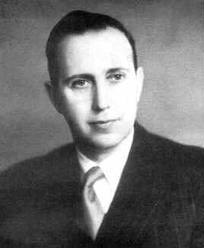
~Arthur Geoffrey Walker (17 July 1909 - 31 March 2001)
The Robertson-Walker metric which Walker mentions in this quotation arose from joint work which he did with his colleague H P Robertson in the late 1930s. Their work put Friedmann's theories of an expanding universe on a sound mathematical foundation and still forms the basis for models of the universe in modern cosmology.
http://www-history.mcs.st-and.ac.uk/Biographies/Walker_Arthur.html
~Fred Hoyle is credited with coining the term Big Bang during a 1949 radio broadcast. Ironically, in a derisory statement, seeking to belittle the credibility of the theory that he didn’t believe to be true, called it the "Big Bang”. The name stuck and we are stuck with the name.

~George Gamow (February 20, 1904 – August 19, 1968)
Gamow was a Ukrainian-American theoretical physicist and cosmologist, who worked with many of the pioneers of quantum theory. He is perhaps best known for his discovery of alpha decay via quantum tunnelling, and for his work on the radioactive decay of the atomic nucleus, including an early “liquid drop” model of the atom. His predictions of cosmic microwave background radiation and his explanation of the present levels of hydrogen and helium in the universe both lent important theoretical support to the Big Bang theory. However, he also published important papers on star formation, stellar nucleosynthesis and genetics/DNA.
In 1934, after emigrating from the Soviet Union, Gamow was appointed professor of physics at George Washington University in Washington, D.C. There he collaborated with Edward Teller in developing a theory of beta decay (1936), a nuclear decay process in which an electron is emitted.
Soon after, Gamow resumed his study of the relations between small-scale nuclear processes and cosmology. He used his knowledge of nuclear reactions to interpret stellar evolution, collaborating with Teller on a theory of the internal structures of red giant stars (1942). From his work on stellar evolution, Gamow postulated that the Sun’s energy results from thermonuclear processes.
Gamow and Teller were both proponents of the expanding-universe theory that had been advanced by Friedmann, Edwin Hubble, and Georges LeMaître. Gamow, however, modified the theory, and he, Ralph Alpher, and Hans Bethe published this theory in a paper called “The Origin of Chemical Elements” (1948). This paper, attempting to explain the distribution of chemical elements throughout the universe, posits a primeval thermonuclear explosion, the big bang that began the universe. According to the theory, after the big bang, atomic nuclei were built up by the successive capture of neutrons by the initially formed pairs and triplets.
http://www.physicsoftheuniverse.com/scientists_gamow.html
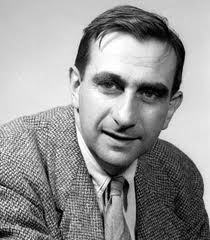
~Edward Teller (1908 - 2003)
In 1935, Teller was invited to the U.S. to become a Professor of Physics at the George Washington Universitiy, where he worked with Gamow until 1941. He was engaged as a theoretical physicist, working in the fields of quantum, molecular and nuclear physics. In 1941, after becoming a naturalized citizen of the U.S., his interest turned to the use of nuclear energy, both fission and fusion.
In Washington, Teller and Gamow worked together closely, formulating the so-called Gamow-Teller rules for classifying subatomic particle behavior in radioactive decay. They also attempted to apply the new understanding of atomic phenomena to astrophysics.
http://www.atomicarchive.com/Bios/Teller.shtml
http://www.achievement.org/autodoc/page/tel0bio-1/
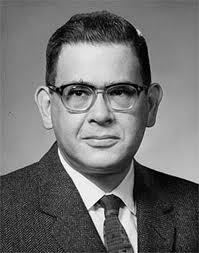
~Ralph Alpher (1921 - 2007)
Alpher, working with George Gamow and Robert Herman in the late 1940s, Alpher made the first attempt to calculate the abundance of elements created in the hot early universe and also predicted the temperature of the radiation left over from the Big Bang. Although this “cosmic microwave background” was discovered in 1964, Alpher’s contributions to the birth of cosmology went largely unrecognized.
Alpher and Robert Herman from Johns Hopkins University published a separate paper predicting that the radiation left over from the Big Bang would have a temperature of 5K. Arno Penzias and Robert Wilson of Bell Labs later shared the 1978 Nobel Prize for Physics for discovering this cosmic microwave background, which has a temperature of 2.7K.

~Robert Herman (August 29, 1914 - February 13, 1997)
Herman was a United States scientist, best known for his work with Ralph Alpher in 1948-50, on estimating the temperature of cosmic microwave background radiation from the Big Bang explosion.
In 1948, as a consequence of their studies of nucleosynthesis in the early expanding Big Bang universe model, they made the first theoretical prediction of the existence of a residual, homogeneous, isotopic, blackbody radiation (cosmic microwave background radiation) that pervades the universe as a vestige of the initial Big Bang explosion.
The Big Bang model for the origin of the universe became widely accepted, and in 1978 a Nobel Prize was awarded to Bell scientists Penzias and Wilson for their detection of the cosmic background radiation.
http://en.wikipedia.org/wiki/Robert_Herman
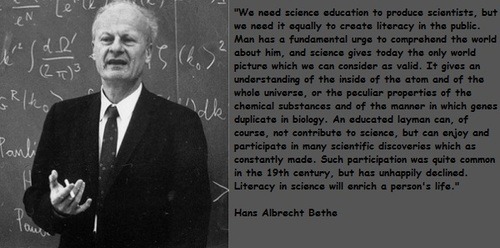
~Hans Albrecht Bethe (July 2, 1906 – March 6, 2005)
Bethe contributed with Ralph Alpher and Georges Gamow to the famous “alpha-beta-gamma” paper on the origin of the chemical elements at the time of the big bang. In 1955, Bethe returned to the theory of nuclei, and worked then on the theory of nuclear matter. Bethe also did some work on solid state theory, and discussed the splitting of atomic energy levels when an atom is inserted into a crystal. He also worked on the theory of metals, and especially developed a theory of order and disorder in alloys.
http://www.nobelprize.org/nobel_prizes/physics/laureates/1967/bethe-bio.html
~Cosmic Microwave Background Radiation (CMB)
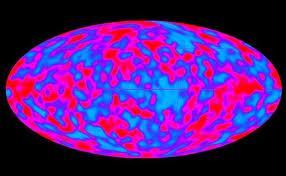
In cosmology, cosmic microwave background (CMB) radiation (also CMBR, CBR, MBR, and relic radiation) is thermal radiation filling the observable universe almost uniformly.
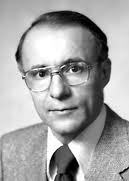
~Arno Allan Penzias (born 26 April 1933)
Penzias is an American physicist and Nobel laureate in physics.
He went on to work at Bell Labs in Holmdel, New Jersey, where, with Robert Woodrow Wilson, he worked on ultra-sensitive cryogenic microwave receivers, intended for radio astronomy observations. In 1964, on building their most sensitive antenna/receiver system, the pair encountered radio noise which they could not explain.
After the pair removed the guano buildup, and the pigeons were shot (each physicist says the other ordered the deed), the noise remained. Having rejected all sources of interference, the pair published a paper announcing their findings.
In consultation with physicist Robert H. Dicke, they came to understand that this stable pattern must be residual cosmic background radiation, a lingering aftereffect of the “big bang” that created the universe many billions of years ago. Their discovery of cosmic microwave background radiation is considered among the 20th century’s most important findings in astrophysics, earning Penzias and Wilson the Nobel Prize for Physics in 1978. Penzias also conducted important research in interstellar chemistry, analyzing millimeter-wave radiation from space to determine the chemical content of molecules in the vast space between stars.
The cosmic microwave background radiation (CMB), the radio remnant of the Big Bang. This allowed astronomers to confirm the Big Bang, and to correct many of their previous assumptions about it.
http://www.nndb.com/people/935/000099638/
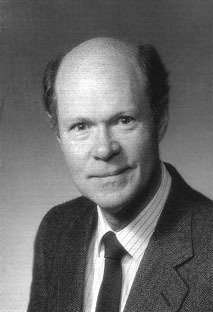
~Robert Woodrow Wilson (born January 10, 1936)
Wilson is an American astronomer, 1978 Nobel laureate in physics, who with Arno Allan Penzias discovered in 1964 the cosmic microwave background radiation (CMB).
http://www.aps.org/programs/outreach/history/historicsites/penziaswilson.cfm
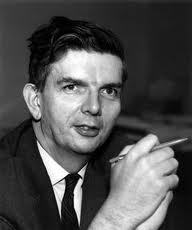
~Robert Henry Dicke (May 6, 1916 – March 4, 1997)
Dicke was an American physicist who made important contributions to the fields of astrophysics, atomic physics, cosmology and gravity.
In the early 1960s, work on Brans-Dicke theory led Dicke to think about the early Universe, and with Jim Peebles he re-derived the prediction of a cosmic microwave background (having allegedly forgotten the earlier prediction of George Gamow and co-workers). Naturally, Dicke, with David Todd Wilkinson and Peter G. Roll immediately set about building a Dicke radiometer to search for the radiation, but they were famously scooped by the accidental detection made by Arno Penzias and Robert Woodrow Wilson (also using a Dicke radiometer), who were working at Bell Labs just a few miles from Princeton. Nevertheless, Dicke’s group made the second clean detection, and their theoretical interpretation of Penzias & Wilson’s results showed that theories of the early universe had moved from pure speculation into well-tested physics.
http://www.nap.edu/html/biomems/rdicke.html

~Phillip James Edwin Peebles (born April 25, 1935)
Peebles is a Canadian-American physicist and theoretical cosmologist who is currently the Albert Einstein Professor Emeritus of Science at Princeton University.
Peebles was born in Winnipeg and completed his bachelor’s degree at the University of Manitoba. He completed his doctorate at Princeton University.
Peebles has made many important contributions to the big bang model. With Robert Dicke and others (nearly two decades after George Gamov, Ralph A. Alpher and Robert C. Herman), he predicted the cosmic microwave background radiation. Along with making major contributions to big bang nucleosynthesis, dark matter and dark energy, he has contributed to the theory of structure formation. Long before it was considered a serious, quantitative branch of physics, Peebles was studying physical cosmology and has done much to establish its respectability.
Peebles, in 1987, proposed the primordial isocurvature baryon model for the development of the early universe.
http://phys-astro.sonoma.edu/brucemedalists/Peebles/index.html
~Stephen William Hawking (born 8 January 1942)
Hawking is a British theoretical physicist and author. His key scientific works to date have been a collaboration with Roger Penrose on theorems on gravitational singularities in the framework of general relativity, and the theoretical prediction that black holes should emit radiation, often called Hawking radiation.
When Hawking began his graduate studies in the 1960s, there was much debate in the physics community about the opposing theories of the creation of the universe: big bang, and steady state. Hawking and his Cambridge friend and colleague, Roger Penrose, showed in 1970 that if the universe obeys general relativity and fits any of the Friedmann models, then it must have begun as a singularity. This work showed that, far from being mathematical curiosities which appear only in special cases, singularities are a fairly generic feature of general relativity.
http://www.biography.com/people/stephen-hawking-9331710
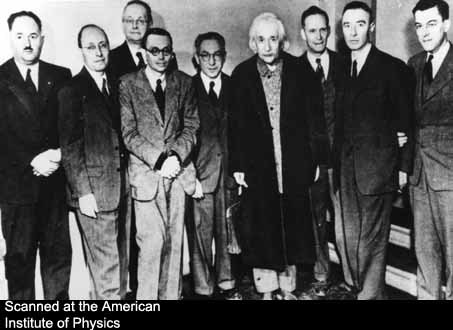
See our related blogs:
The Big Bang Scientific Theory
http://exposingreligionblog.tumblr.com/post/27703600307
Become An Evolution Expert!
http://exposingreligionblog.tumblr.com/post/8154081516
*********************************************
Please Join Pages In Our ExposingReligion Network
http://exposingreligionblog.tumblr.com/post/20825271431
The ExposingReligion BLOG Directory:
http://exposingreligionblog.tumblr.com/post/16944061808
The Science Nexus Of Human Cognitive Evolution & The Extinction Of Religion https://www.facebook.com/SciencesRefutingReligions
Debating The Untested, Unsubstantiated & Unproven Hypothesis Of Religions https://www.facebook.com/DebateReligion
Helping Youth Resist Religious Brainwashing Exploitation & Mental Terrorism https://www.facebook.com/ReligiousFreeYouth
alexjonesvevo liked this
boobytrapzap liked this
hellforcertain liked this
xwingsandpaperplanes liked this
 loquaciouszebra liked this
loquaciouszebra liked this kookybat810 liked this
sneeps liked this
exposingreligionblog posted this